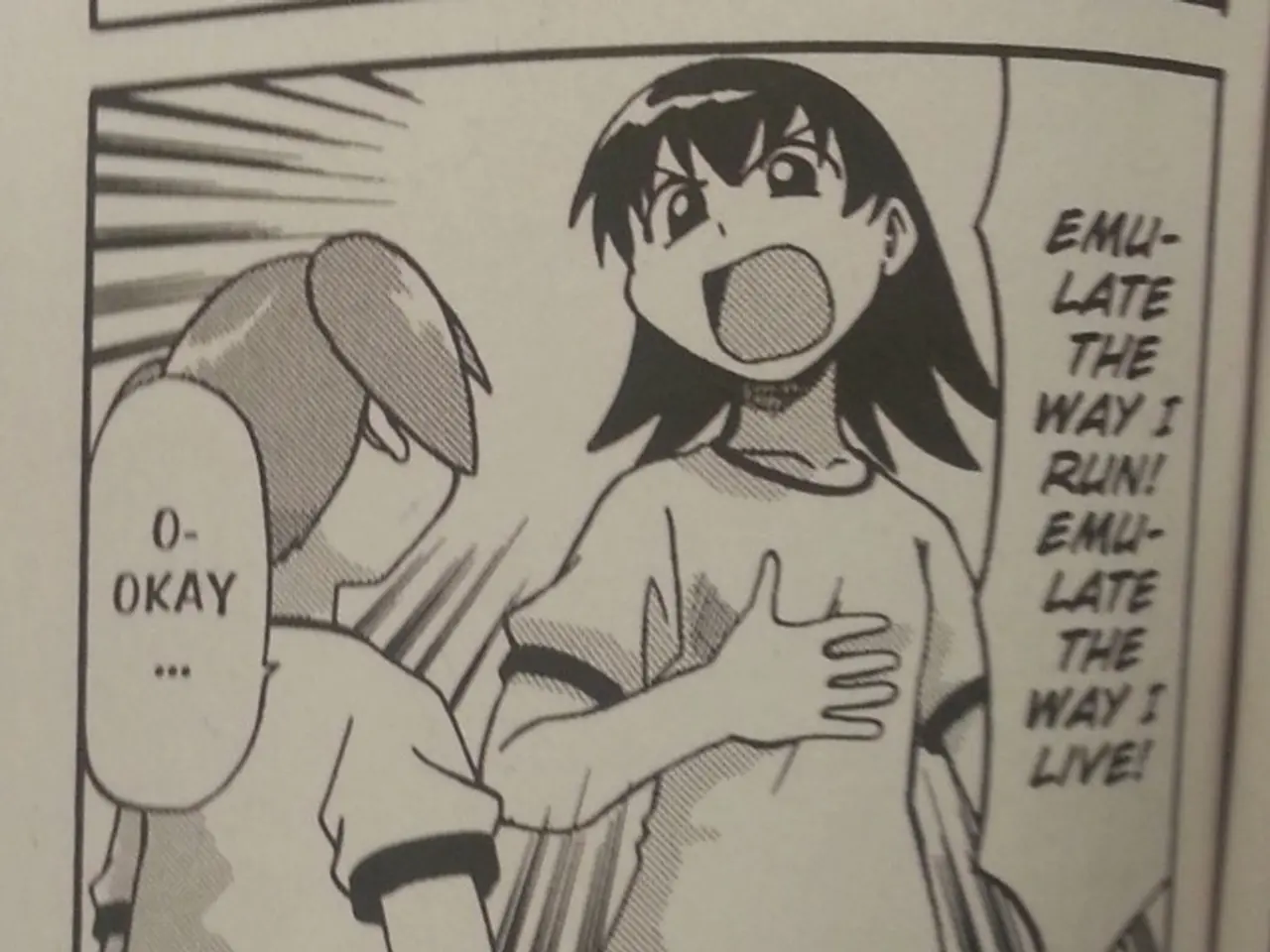Mental Health Advocacy Employs The Semicolon: A Potent Symbol Representing Resilience and Perseverance
In the world of mental health advocacy, few symbols have captured hearts and minds quite like the humble semicolon. This seemingly mundane punctuation mark has been transformed into a powerful symbol of hope, resilience, and solidarity for those grappling with mental health battles. Dubbed as a 'pause that keeps going,' the semicolon project has morphed into a global movement, impacting the lives of countless individuals and sparking crucial conversations about mental health.
Understanding the Semicolon's Meaning in Depression
At its core, the semicolon's meaning in mental health is simple yet potent. In grammar, a semicolon signifies a pause in a sentence instead of a full stop. In the context of depression, the semicolon signifies that a person's journey isn't conclusive; it's temporarily paused. For those battling depression, the semicolon offers a potent reminder that their struggles are not the end of their story, encouraging them to view their challenges as a temporary roadblock instead of a permanent conclusion.
The surprising connection between punctuation and mental health struggles may seem odd initially. However, it's this unusual association that makes the semicolon so impactful. By imbuing an everyday element with profound significance, it becomes relatable and accessible to a wide audience.
By choosing to continue their story—symbolized by the semicolon—individuals are making a conscious choice to persevere through their mental health struggles. This decision is a powerful declaration of resilience and hope, reinforcing the idea that one has control over their narrative, even in the face of depression or other mental health issues.
The Semicolon Movement in Mental Health Awareness
The roots of the depression semicolon movement can be traced back to 2013, when Amy Bleuel founded Project Semicolon. Bleuel, who had lost her father to suicide and struggled with her own mental health challenges, sought to create a symbol of hope for those grappling with depression, suicide, addiction, and self-injury.
What began as a modest initiative quickly gained momentum, primarily due to the power of social media. Platforms like Instagram, Twitter, and Facebook became fertile grounds for spreading awareness about the semicolon project. People began sharing images of semicolon tattoos, artwork, and personal stories, forming a virtual community of support and understanding.
The impact of the semicolon project on reducing stigma has been profound. By providing a recognizable, easily identifiable symbol, it has facilitated mental health conversations and brought these topics into the mainstream. The semicolon has become a conversation starter, enabling people to discuss mental health more openly and without shame.
The Semicolon Tattoo: A Permanent Testimony of Strength
One of the most in-your-face representations of the semicolon movement is the rise of semicolon tattoos. These tattoos have become a way for survivors of mental health challenges and their allies to show solidarity, raise awareness, and memorialize significant milestones in their mental health journeys. The meaning behind semicolon tattoos is deeply personal and can vary from individual to individual.
For many, the semicolon tattoo serves as a permanent reminder of their strength and resilience. It signifies battles fought and overcome, a testament to their determination to persevere despite the challenges they've faced. Others choose to incorporate the semicolon into larger designs, while others opt for the unadorned punctuation mark.
These tattoos often carry significant personal stories, such as honoring lost loved ones, marking personal triumphs, or extending support to friends and family members struggling with mental health challenges. Beyond personal significance, semicolon tattoos serve as conversation starters about mental health, providing an opportunity to share experiences, educate others, and contribute to the ongoing dialogue about mental health awareness.
Beyond Depression: The Semicolon in Broader Mental Health Contexts
Although the semicolon is frequently associated with depression and suicide prevention, its relevance extends to a broader range of mental health conditions. People dealing with anxiety, PTSD, eating disorders, and other mental health issues have also embraced the symbol.
The semicolon's message of continuity and hope resonates across various mental health experiences. It encourages overall mental wellness by prodding individuals to reflect, pause, and choose to continue their path to better mental health.
However, it's essential to acknowledge that the semicolon movement has been met with criticism. Some argue that it oversimplifies complex mental health issues or that it has been commodified. Others worry that it trivializes serious mental health conditions. Despite these concerns, many continue to find value and comfort in the symbol.
The Ongoing Impact of the Semicolon Movement
The semicolon movement has left an indelible mark on mental health awareness. It has created a visual language for discussing mental health, making these conversations more accessible and less intimidating. The symbol has been incorporated into various mental health initiatives, from awareness campaigns to support groups.
Social media continues to play a vital role in spreading the message of the semicolon project. Hashtags like #semicolonproject and #mystoryisntoveryet have fostered online communities where people can share their experiences, extend support, and find resources.
The semicolon has also inspired other mental health symbols and awareness initiatives. For example, the green ribbon has become a symbol for depression awareness, while various mental health tattoo ideas have gained popularity as expressions of support and raising awareness.
As we grapple with mental health challenges on a global scale, symbols like the semicolon play a crucial role in fostering understanding and empathy. They remind us of the importance of mental health awareness and the power of communal support.
The semicolon movement encourages us all to be more open about mental health, to seek help when needed, and to support those around us who may be struggling. It's a call to action, prompting us to continue the mental health conversation and to work collectively towards a reality where mental health receives the same importance as physical health.
All things considered, the semicolon has emerged as a powerful symbol of hope and resilience in the face of mental health struggles. From its humble beginnings as a grassroots movement to its current status as a globally recognized emblem, the semicolon continues to inspire and support individuals on their mental health journeys. As we progress, let us carry the spirit of the semicolon with us: that our stories are not over, that there is always hope, and that together, we can shape the future of mental health awareness and support.
References
- Project Semicolon. (2021). Our Story. Retrieved from https://projectsemicolon.com/our-story/
- National Alliance on Mental Illness. (2021). Mental Health By the Numbers. Retrieved from https://www.nami.org/mhstats
- American Foundation for Suicide Prevention. (2021). Suicide Statistics. Retrieved from https://afsp.org/suicide-statistics
- World Health Organization. (2021). Depression. Retrieved from https://www.who.int/news-room/fact-sheets/detail/depression
- Mental Health America. (2021). The State of Mental Health in America. Retrieved from https://mhanational.org/issues/state-mental-health-america
- Substance Abuse and Mental Health Services Administration. (2021). National Survey on Drug Use and Health. Retrieved from https://www.samhsa.gov/data/release/2019-national-survey-drug-use-and-health-nsduh-releases
- American Psychological Association. (2021). Mental Health. Retrieved from https://www.apa.org/topics/mental-health
- The semicolon, a potent symbol in mental health, serves as a reminder for individuals battling depression that their struggles are not the end of their story, encouraging them to view their challenges as a temporary roadblock instead of a permanent conclusion.
- By imbuing an everyday element with profound significance, the semicolon becomes relatable and accessible, making it an effective tool in the science of psychology for sparking conversations about mental health and mental wellness.
- The semicolon's relevance extends beyond depression, resonating with individuals dealing with anxiety, PTSD, eating disorders, and other mental health issues as a symbol of continuity and hope, reinforcing the idea that one has control over their narrative even in the face of such challenges.








